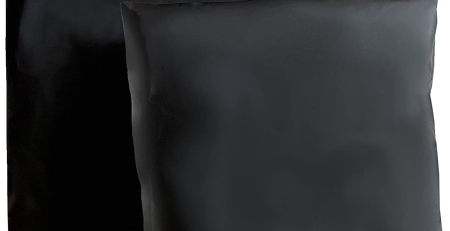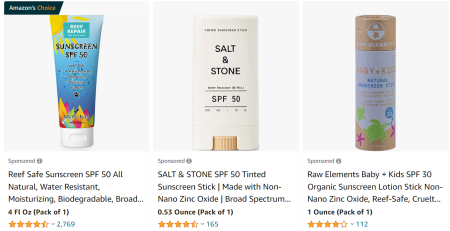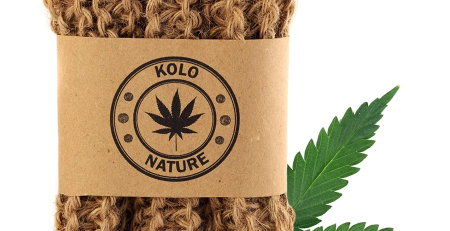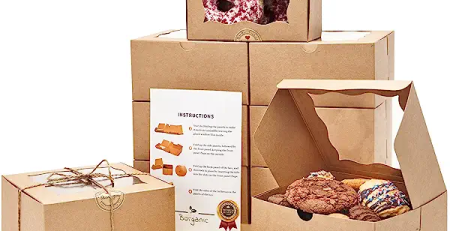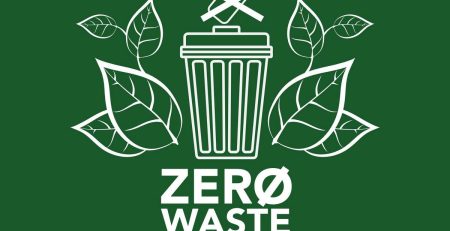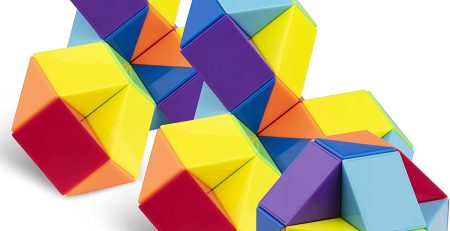Living a Sustainable and Eco-Friendly Lifestyle
Sustainable and Eco-Friendly Lifestyle
Sustainable and Eco-Friendly Lifestyle – Living a sustainable and eco-friendly lifestyle is a conscious choice that prioritizes the well-being of the planet. By adopting eco-friendly practices, we can reduce our environmental footprint, conserve resources, and contribute to a healthier and more sustainable future.
II. Sustainable Home Practices
- Energy-efficient appliances and lighting: Upgrade to energy-efficient appliances and switch to LED light bulbs to reduce energy consumption.
- Water conservation techniques: Install water-saving fixtures, such as low-flow showerheads and faucets, and practice water-saving habits like fixing leaks and using water responsibly.
- Recycling and waste management: Implement a recycling system at home and prioritize waste reduction through composting and reusing items.
- Sustainable Party Bag Fillers – Find eco-friendly and sustainable alternatives for party bag fillers, offering unique and planet-friendly options for party favors and gifts.
- Build a Sustainable Home for Living – Discover tips, resources, and ideas for building a sustainable home, focusing on energy efficiency, eco-friendly materials, and sustainable design principles.
III Eco-Friendly Transportation
- Public transportation and carpooling: Opt for public transportation whenever possible or carpool with others to reduce emissions.
- Cycling and walking: Use a bicycle or walk for short distances instead of relying on cars.
- Electric vehicles and hybrid cars: Consider switching to electric vehicles or hybrid cars, which have lower carbon emissions.
Sustainable Backpack for Eco Adventure – Explore Sustainable and Eco-Friendly Lifestyle backpack options designed for eco adventures, combining durability, functionality, and eco-friendly materials for outdoor enthusiasts.
IV. Conscious Consumption
- Choosing sustainable and ethical products: Look for eco-friendly certifications, organic materials, and fair trade labels when shopping for products.
- Reducing single-use plastics: Replace single-use plastic items with reusable alternatives, such as stainless steel water bottles, cloth shopping bags, and beeswax wraps.
- Supporting local and eco-friendly businesses: Shop from local businesses that prioritize sustainability and offer eco-friendly products.
Eco-Friendly Brands for a Greener Future – Discover a collection of eco-friendly brands that are leading the way towards a greener future, offering Sustainable and Eco-Friendly Lifestyle products and promoting ethical practices.
V. Sustainable Food Choices
- Organic and locally sourced produce: Purchase organic and locally sourced fruits, vegetables, and other food items to support sustainable agriculture and reduce carbon emissions from transportation.
- Plant-based and vegetarian/vegan diets: Incorporate more plant-based meals into your diet to reduce the environmental impact of animal agriculture.
- Reducing food waste: Plan meals, store food properly, and compost food scraps to minimize food waste.
VI. Mindful Energy Consumption
- Renewable energy sources: Explore options for using renewable energy sources, such as solar panels or wind turbines, to power your home.
- Energy-efficient home design and insulation: Improve home insulation and design to minimize energy loss and optimize energy efficiency.
- Smart home technology for energy management: Utilize smart home devices and technologies that help monitor and manage energy consumption effectively.
- Eco-Friendly Cleaning Products – Explore a range of eco-friendly cleaning products that are effective and environmentally conscious, helping you maintain a clean home while minimizing your impact on the planet.
- Affordable Sustainable Clothing – Find affordable options for Sustainable and Eco-Friendly Lifestyle clothing, showcasing brands and retailers that prioritize ethical practices and eco-friendly materials.
VII. Outdoor Activities and Nature Conservation
- Engaging in eco-tourism and outdoor adventures: Choose eco-friendly travel options and engage in activities that promote appreciation and conservation of nature.
- Protecting natural habitats and wildlife: Support conservation efforts, participate in local clean-up initiatives, and avoid activities that harm ecosystems and wildlife.
- Participating in community clean-up initiatives: Join local community clean-up events to keep neighborhoods and natural areas clean and free from litter.
Sustainable Skin Products – Shop Online – Find a range of sustainable and environmentally friendly skincare products available for online purchase, prioritizing both your skin’s health and the planet’s well-being
VIII. Sustainable Fashion and Personal Care
- Choosing eco-friendly and ethical clothing brands: Look for brands that use Sustainable and Eco-Friendly Lifestyle, ethical manufacturing processes, and fair labor practices.
- Minimalist and conscious wardrobe choices: Practice mindful shopping by opting for versatile, high-quality garments that are timeless and reduce the need for excessive consumption.
- Using natural and eco-friendly personal care products: Switch to natural and organic personal care products that are free from harmful chemicals and packaged sustainably.
IX. Mindset and Education
- Being informed about environmental issues: Stay updated on current environmental issues and educate yourself about sustainable practices.
- Engaging in sustainable living education and workshops: Attend workshops, webinars, and seminars that focus on sustainable living and share knowledge with others.
- Sharing knowledge and inspiring others: Encourage friends, family, and the community to adopt sustainable habits by sharing your own experiences and knowledge.
X. Building Community and Collaboration
- Joining local environmental organizations: Become a member of local environmental organizations or participate in eco-focused community groups to collaborate on sustainability initiatives.
- Participating in sustainable community initiatives: Get involved in community projects like community gardens, tree planting, and recycling drives to make a positive impact together.
- Collaborating with like-minded individuals and groups: Form partnerships with like-minded individuals, businesses, and organizations to work towards shared sustainability goals.
Choosing Eco-Friendly Building Materials for a Sustainable Future
When it comes to constructing or renovating our homes, opting for eco-friendly building materials is a significant step towards a more sustainable future.


By choosing materials that are environmentally friendly and have a reduced impact on our planet, we can create healthier living spaces and minimize our carbon footprint. Here are some key reasons why eco-friendly building materials are gaining popularity and some examples of Sustainable and Eco-Friendly Lifestyle options available today.
- Reduced Environmental Impact: Eco-friendly building materials are designed to minimize harm to the environment throughout their lifecycle. They are sourced responsibly, often from renewable or recycled materials, and have lower carbon emissions during manufacturing.
- Improved Indoor Air Quality: Traditional building materials can release harmful volatile organic compounds (VOCs) into the air, contributing to poor indoor air quality. Eco-friendly materials, such as low VOC paints, formaldehyde-free insulation, and natural flooring options, help create healthier indoor environments for occupants.
- Energy Efficiency: Many eco-friendly materials are designed to improve energy efficiency in buildings. For example, using high-performance insulation and energy-efficient windows can reduce the need for heating and cooling, resulting in lower energy consumption and reduced utility bills.
- Water Conservation: Sustainable building materials often prioritize water conservation. Products like low-flow faucets, water-efficient toilets, and rainwater harvesting systems help reduce water consumption and preserve this precious resource.
- Waste Reduction and Recycling: Eco-friendly materials embrace the principles of waste reduction and recycling. They are often made from recycled or repurposed materials and can be easily recycled at the end of their life cycle, reducing the amount of waste sent to landfills.


Now, let’s explore some examples of eco-friendly building materials that are readily available in the market:
- Bamboo Flooring: Bamboo is a fast-growing, renewable resource that makes for an excellent alternative to hardwood flooring. It is durable, stylish, and has a lower environmental impact compared to traditional wood flooring options.
- Recycled Glass Countertops: Made from post-consumer or post-industrial recycled glass, these countertops are an eco-friendly choice for kitchen and bathroom surfaces. They come in various colors and styles and offer a unique and sustainable design element.
- Cork Insulation: Cork is a natural and renewable material that provides excellent thermal and acoustic insulation. It is derived from the bark of cork oak trees without harming the tree, making it a sustainable choice for insulation.
- Solar Roof Tiles: Solar roof tiles integrate solar energy generation into the roof itself, providing clean and renewable energy for homes. They are an aesthetically pleasing alternative to traditional solar panels.
- Reclaimed Wood: Using reclaimed wood from old buildings, barns, or salvaged materials adds character and charm to any space while reducing the demand for new timber. It’s a sustainable option for flooring, furniture, and decorative elements.
- Recycled Steel: Recycled steel is a durable and eco-friendly material commonly used in construction. It reduces the need for mining raw materials and offers structural strength and stability.
- Natural Paints: Conventional paints can emit harmful chemicals into the air. Opting for natural paints made from plant-based ingredients or mineral pigments ensures healthier indoor air quality.
Embrace Sustainable Comfort: The Benefits of Sustainable Bedding
When it comes to creating a sustainable and eco-friendly home, one area that often goes unnoticed is our bedding. Switching to sustainable bedding not only promotes a greener lifestyle but also offers numerous benefits for our well-being and the planet.
From organic materials to responsible manufacturing practices, sustainable bedding options are designed to minimize environmental impact while providing a comfortable and restful sleep experience.


Let’s explore the advantages of choosing sustainable bedding and some popular options available today.
- Organic and Chemical-Free: Sustainable bedding is typically made from organic materials, such as organic cotton, bamboo, or hemp. These materials are grown without the use of harmful pesticides, herbicides, or synthetic fertilizers, ensuring a healthier sleep environment and reducing exposure to potentially toxic substances.
- Reduced Carbon Footprint: Sustainable bedding focuses on reducing the carbon footprint associated with its production. Manufacturers often employ environmentally friendly practices, such as using renewable energy sources, implementing water conservation measures, and minimizing waste generation.
- Natural and Hypoallergenic: Many sustainable bedding options are naturally hypoallergenic, making them suitable for individuals with allergies or sensitive skin. Organic cotton, for instance, is less likely to cause irritation and is resistant to dust mites and mold.
- Durability and Longevity: Sustainable bedding is designed to be durable and long-lasting. High-quality materials and craftsmanship ensure that the bedding retains its comfort and appearance for years, reducing the need for frequent replacements and further reducing waste.
- Ethical Manufacturing: Sustainable bedding brands often prioritize fair labor practices and ethical manufacturing. They ensure safe working conditions, fair wages, and support local communities, contributing to a more socially responsible and sustainable industry.


Now, let’s explore some popular options for sustainable bedding:
- Organic Cotton Sheets: Made from pesticide-free and certified organic cotton, these sheets are soft, breathable, and gentle on the skin. Look for brands that are GOTS (Global Organic Textile Standard) certified for assurance of organic integrity.
- Bamboo Bedding: Bamboo is a sustainable and fast-growing plant that requires minimal resources to thrive. Bamboo bedding is known for its natural moisture-wicking properties, making it ideal for hot sleepers. Look for brands that use responsibly sourced and processed bamboo.
- Hemp Bedding: Hemp is a highly sustainable and eco-friendly material known for its durability and breathability. Hemp bedding is naturally resistant to bacteria and odors and becomes softer with each wash.
- Eucalyptus Tencel Sheets: Tencel, derived from sustainably sourced eucalyptus trees, offers a silky-smooth feel and excellent moisture-wicking properties. Tencel bedding is also biodegradable and requires less water and energy to produce.
- Recycled and Upcycled Bedding: Some sustainable bedding brands repurpose materials like plastic bottles or textile scraps to create new bedding products. These options contribute to waste reduction and promote circular economy principles.
Remember to check for reputable brands that prioritize sustainability and transparency in their manufacturing processes. Look for certifications such as GOTS, OEKO-TEX, or USDA Organic to ensure the authenticity of sustainable claims.
By opting for sustainable bedding, we can create a cozy and eco-friendly sleep haven while minimizing our ecological footprint. Explore this selection of sustainable bedding available on Amazon to discover a wide range of options that blend comfort, style, and environmental consciousness. Embrace sustainable comfort and sleep soundly, knowing you’re making a positive impact on the planet.
Eco-Friendly Wrapping Paper: Wrap Your Gifts with Sustainability
When it comes to gift-giving, the excitement of unwrapping a present is part of the joy. However, traditional wrapping paper often contributes to unnecessary waste and harm to the environment.
Luckily, there’s a better way to wrap gifts while still maintaining the festive spirit. Eco-friendly wrapping paper offers a sustainable solution that allows us to express our creativity while reducing our ecological footprint.


- Recycled Wrapping Paper: One of the easiest and most accessible options for eco-friendly wrapping paper is to choose recycled paper. Look for wrapping paper made from post-consumer recycled content or even paper made from renewable materials like bamboo or hemp. Recycled wrapping paper reduces the demand for virgin materials and helps divert waste from landfills.
- Plant-Based and Biodegradable: Another eco-friendly choice is wrapping paper made from plant-based materials, such as rice paper or paper derived from vegetable fibers. These materials are biodegradable and break down naturally in the environment, minimizing their impact on ecosystems.
- Reusable Wraps: Consider using reusable wraps, such as fabric gift bags, cloth napkins, or scarves, to wrap your gifts. These options not only reduce waste but also add an extra element of charm and uniqueness to your presents. The recipient can then reuse the fabric for other purposes or pass it on to someone else.
- Furoshiki Wrapping: Furoshiki is a Japanese tradition of wrapping objects in fabric. This method allows you to create beautiful and reusable gift wraps using scarves, handkerchiefs, or pieces of cloth. Furoshiki wraps can be creatively tied and folded, adding a personal touch to your gift presentation.
- DIY Wrapping Paper: Unleash your creativity and make your own eco-friendly wrapping paper using recycled materials like newspaper, old maps, or brown kraft paper. Personalize it with stamps, drawings, or natural elements like leaves or flowers. DIY wrapping paper not only reduces waste but also adds a unique and personal touch to your gifts.
- Seed Paper Wrapping: Consider wrapping your gifts with seed paper, which is embedded with flower or herb seeds. After unwrapping, the recipient can plant the paper, and it will sprout beautiful plants, adding an eco-friendly twist to the gift-giving experience.
- No-Wrap Gifts: Embrace the concept of no-waste gift-giving by opting for gifts that don’t require wrapping. Experience-based gifts, digital gift cards, or homemade treats are thoughtful and sustainable alternatives that eliminate the need for wrapping paper altogether.
- Natural Elements: Explore using natural elements like twine, jute, or raffia for tying up your gifts instead of traditional plastic ribbons. These options are biodegradable and add a rustic and eco-friendly touch to your presents.
- Eco-Friendly Adornments: When adding decorative elements to your gift, opt for eco-friendly alternatives like dried flowers, pinecones, or reusable fabric ribbons. Avoid using plastic bows or glitter, as they contribute to pollution and are harmful to the environment.
- Wrapping Paper Recycling: If you receive gifts wrapped in traditional wrapping paper, make sure to recycle it properly. Remove any non-paper elements like tape or bows, and check your local recycling guidelines for proper disposal.


Eco-Friendly Fabric: Sustainable Style for a Greener Future
In recent years, the fashion industry has undergone a significant transformation, with a growing emphasis on sustainability and eco-friendly practices. One crucial aspect of this shift is the use of eco-friendly fabrics. These fabrics are produced using sustainable processes, renewable resources, and with minimal environmental impact. If you’re looking to make more conscious choices in your wardrobe, here are some eco-friendly fabric options to consider:
- Organic Cotton: Organic cotton is grown without the use of harmful pesticides and chemicals, making it a healthier and more environmentally friendly alternative to conventional cotton. It reduces water consumption, promotes soil health, and protects farmers’ well-being. Look for organic cotton clothing, bedding, and accessories to support a sustainable fashion industry.
- Hemp: Hemp is a highly versatile and sustainable fabric. It requires minimal water and no pesticides to grow, making it an eco-friendly choice. Hemp fibers are strong, durable, and breathable, making them suitable for a wide range of clothing and home textiles.
- Tencel (Lyocell): Tencel, also known as Lyocell, is a fabric made from wood pulp sourced from sustainably managed forests. The production process uses a closed-loop system, where the solvents are recycled, minimizing waste and water usage. Tencel is soft, breathable, and has excellent moisture-wicking properties, making it ideal for clothing, bedding, and other textiles.
- Bamboo: Bamboo fabric is derived from bamboo grass, which grows quickly without the need for pesticides or fertilizers. It is a renewable resource that requires minimal water and can be harvested sustainably. Bamboo fabric is soft, hypoallergenic, and naturally antimicrobial, making it a popular choice for clothing and bedding.
- Recycled Fabrics: Another eco-friendly option is fabrics made from recycled materials. These fabrics are created by repurposing post-consumer waste, such as plastic bottles or textile scraps, into new fibers. Recycling reduces the demand for virgin resources and diverts waste from landfills. Look for clothing and accessories made from recycled polyester or recycled nylon to support a circular economy.
- Linen: Linen is made from the fibers of the flax plant, which requires fewer pesticides and water compared to other crops. Linen fabric is breathable, lightweight, and has excellent moisture-wicking properties. It is a durable and biodegradable fabric suitable for clothing, home textiles, and upholstery.
- Wool: When sourced responsibly, wool can be an eco-friendly choice. Look for wool from ethically raised and organically managed sheep. Wool is a natural and renewable fiber that is biodegradable, durable, and has excellent insulating properties.
- Soy Fiber: Soy fiber is made from the byproduct of soybean processing. It is a biodegradable and renewable resource that requires fewer chemicals and less energy to produce compared to traditional fabrics. Soy fabric is soft, lightweight, and moisture-wicking, making it suitable for clothing and activewear.
- Peace Silk: Also known as Ahimsa silk, peace silk is produced without harming the silkworms. It allows the silkworms to complete their life cycle, unlike conventional silk production where the silkworms are killed during the extraction of silk. Peace silk is a cruelty-free and more Sustainable and Eco-Friendly Lifestyle alternative for silk lovers.
- Vegetable-Dyed Fabrics: Opt for fabrics dyed using natural, plant-based dyes instead of synthetic chemicals. Vegetable dyes are non-toxic, biodegradable, and produce beautiful, earthy hues.



